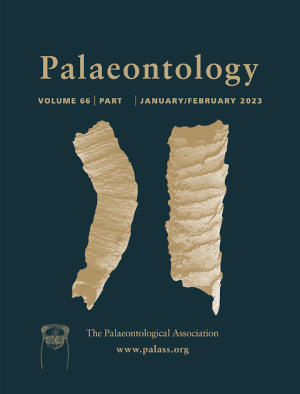Article: Exceptions to the temperature–size rule: no Lilliput Effect in end-Permian ostracods (Crustacea) from Aras Valley (northwest Iran)
Publication: Palaeontology
Volume:
66
Part:
4
Publication Date:
2023
Article number:
e12667
Author(s):
Paulina S. Nätscher, Jana Gliwa, Kenneth De Baets, Abbas Ghaderi, and Dieter Korn
Abstract
Abstract The body size of marine ectotherms is often negatively correlated with ambient water temperature, as seen in many clades during the hyperthermal crisis of the end-Permian mass extinction (c. 252 Ma). However, in the case of ostracods, size changes during ancient hyperthermal events are rarely quantified. In this study, we evaluate the body size changes of ostracods in the Aras Valley section (northwest Iran) in response to the drastic warming during the end-Permian mass extinction at three taxonomic levels: class, order, species. At the assemblage level, the warming triggers a complete species turnover in the Aras Valley section, with larger, newly emerging species dominating the immediate post-extinction assemblage for a short time. Individual ostracod species and instars do not show dwarfing or a change in body size as an adaptation to the temperature stress during the end-Permian crisis. This may indicate that the ostracods in the Aras Valley section might have been exceptions to the temperature–size rule (TSR), using an adaptation mechanism that does not involve a decrease in body size. This adaptation might be similar to the accelerated development despite constant instar body sizes that can be observed in some recent experimental studies of ostracod responses to thermal stress.
